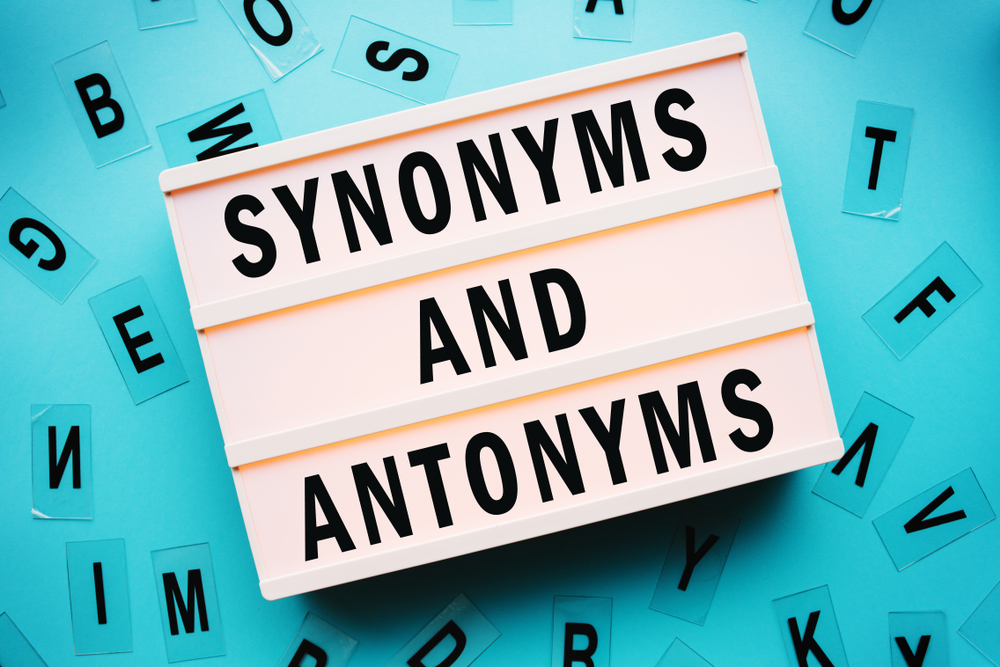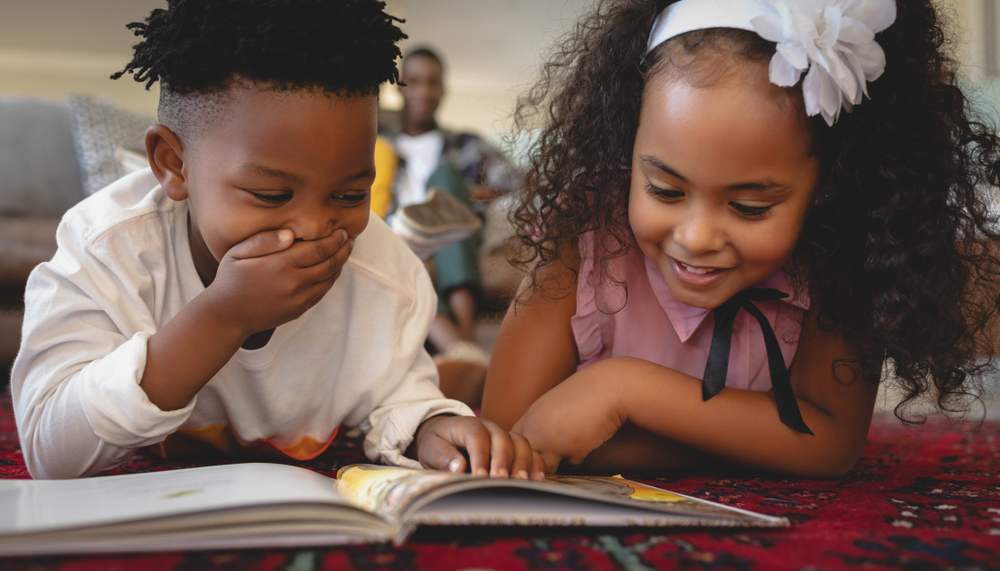Rhyme recognition Reading Fiction Worksheets for Ages 8-9
3 filtered results
-
From - To
Enhance your child's reading skills with our Rhyme Recognition Reading Fiction Worksheets, specifically designed for ages 8-9. These engaging activities help students identify and create rhymes, fostering phonemic awareness while immersing them in enjoyable narratives. By reading fun stories and completing tailored exercises, young learners improve their vocabulary and develop a love for reading. Each worksheet encourages critical thinking and communication skills through interactive tasks, making learning enjoyable and effective. Perfect for at-home practice or in-class activities, our worksheets provide an excellent resource for reinforcing rhyme recognition in reading. Spark creativity and boost confidence in young readers today!
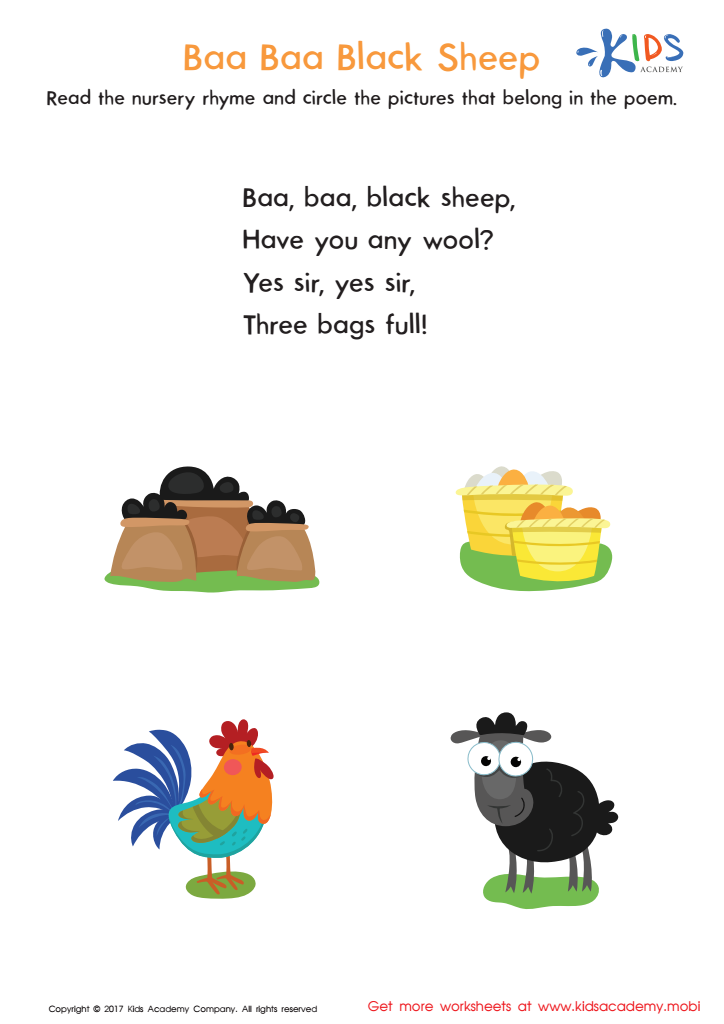

Baa Baa Black Sheep Printable
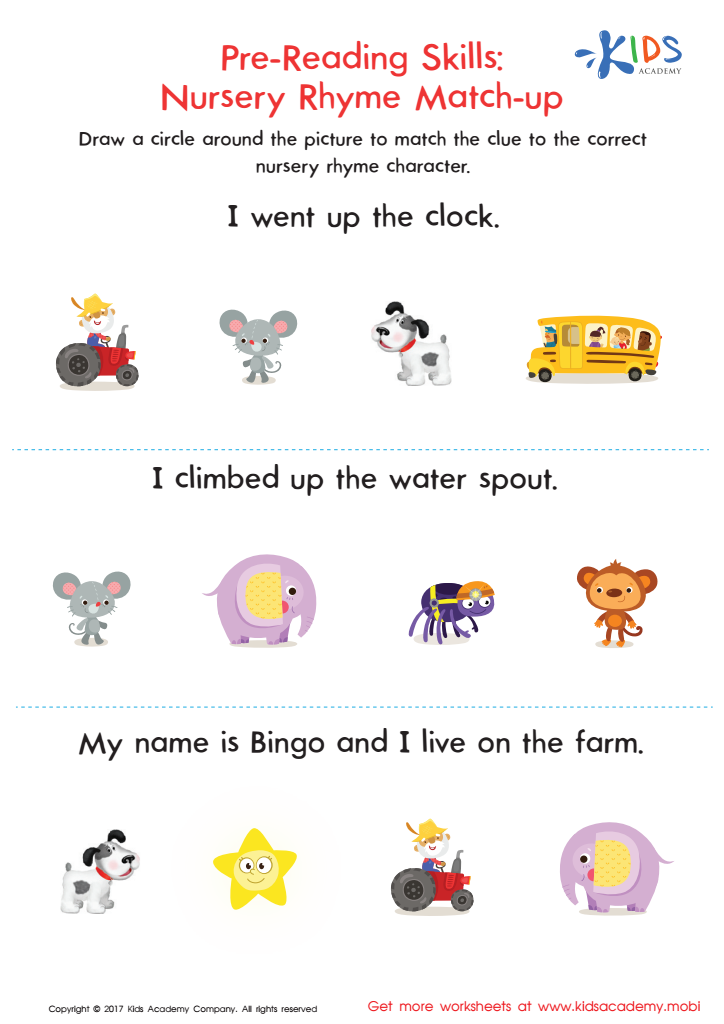

Nursery Rhyme Match–Up Worksheet
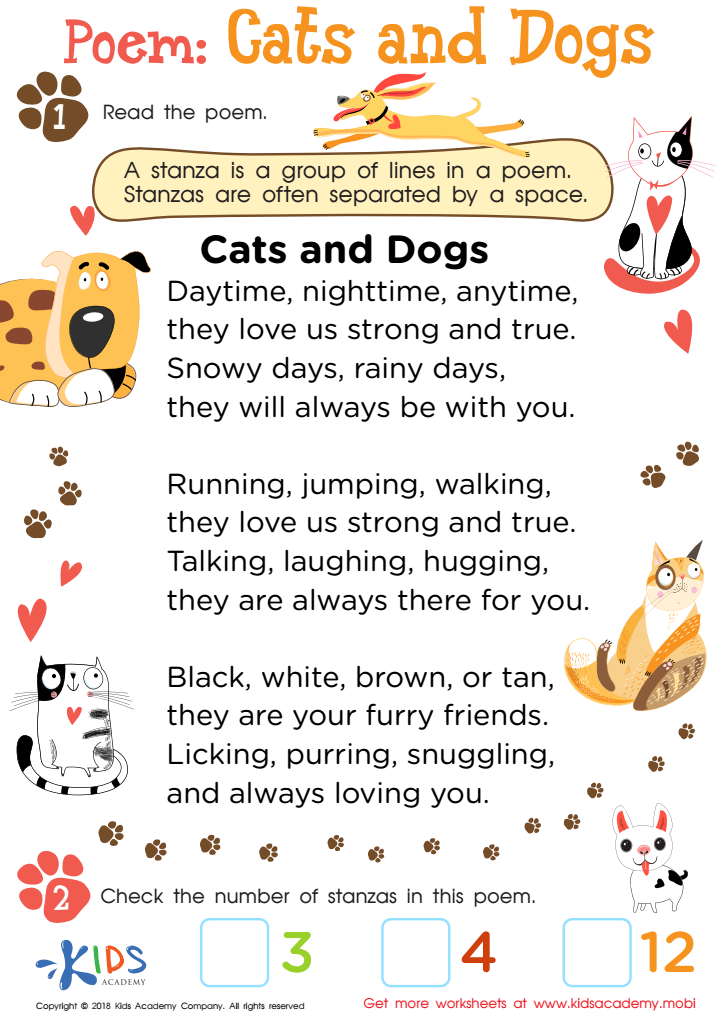

Poem: Cats and Dogs Worksheet
Rhyme recognition is a fundamental aspect of early literacy that significantly enhances reading abilities, particularly in children aged 8-9. At this age, kids are transitioning from learning to read to reading to learn, making it essential for parents and teachers to emphasize rhyme recognition within fictional texts. Recognizing rhymes helps children develop phonemic awareness, which is critical for understanding the sounds within words. This skill lays the groundwork for decoding unfamiliar words, increasing reading fluency, and boosting comprehension.
Fiction often incorporates rhyme, which makes reading more engaging and memorable for children. Rhyming stories foster a joy for reading and stimulate imagination, encouraging deeper connections with the text. Additionally, when children can predict what comes next in rhyming patterns, it cultivates their strategic thinking and inference skills.
By prioritizing rhyme recognition through everyday reading activities, parents and teachers can support vocabulary development and instill a lifelong love of literature. Ultimately, fostering these skills not only nurtures effective reading but also empowers children with the tools to navigate complex texts in academia and beyond. This foundational aspect of reading enriches their educational journey and contributes to overall language development.

 Assign to My Students
Assign to My Students





